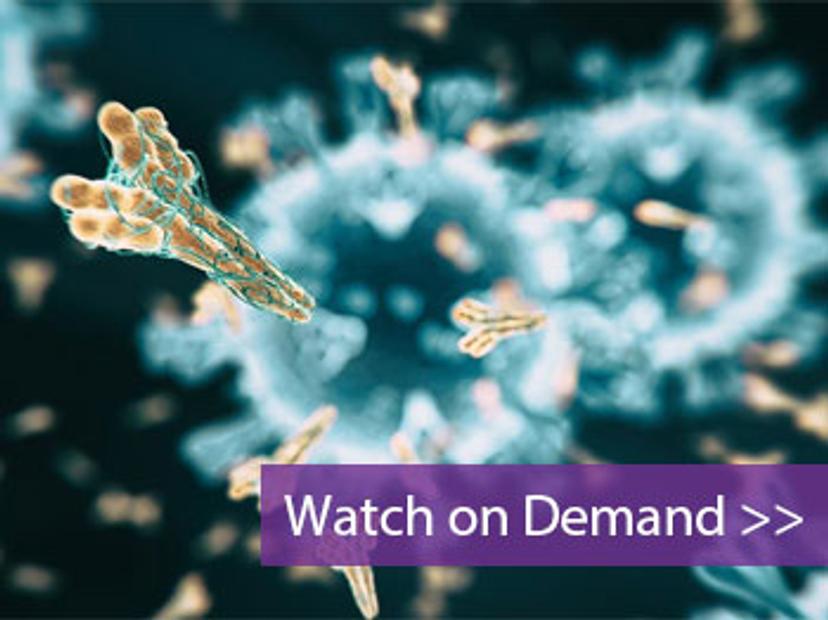COVID testing: Scaling up and monitoring for the future
Watch this on-demand webinar to learn how non-invasive monitoring programs can improve confidence in COVID-19 test results
20 Dec 2021

Discover how diagnostics service provider Laboratory Healthcare Medical (LHM) has prepared itself for the future of COVID-19 testing by successfully implementing a high-throughput automated workflow.
In this free SelectScience® webinar, now available on demand, hear from Cheyenne Seerden and Niel Roekalea from LHM, Tanya Galewski from SpeeDx, and Niels Kruize from Molgen, as they discuss how LHM has successfully implemented a high-throughput automated workflow. Discover how this new workflow can be used to incorporate non-invasive monitoring with diagnostic assays covering key respiratory pathogens, including SARS-CoV-2, influenza A/B and RSV. Plus, find out how the new workflow will enable LHM to stay ahead of future respiratory seasons.
Watch on demandRead on for the live Q&A session, or register to watch the webinar at a time that suits you.
You mentioned that monitoring workflows aren't technically clinical because they're not providing a unique patient diagnosis. Does that mean that the workflow doesn't need to be approved by IVD regulatory bodies?
NK: It depends how we define monitoring. For example, in Northwest Europe, a lot of governments want to offer the possibility for the public to get tested. If you have been in contact with, or suspect you might be infected, you can go to your local health authorities, and in most countries, it's free of charge to have a test. The second option is to get tested before you travel, and the third one is when you want to go to an event.
In our opinion, testing when you feel sick is a very good idea and that's proper diagnostics. For that, we do recommend either IVD products or a workflow tested by an ISO 17025 or 15189 laboratory.
When it comes to monitoring, we as a company still want to pull to that same standard of testing. However, testing right before you need it, for example, a day before you get into a plane or go to a concert, is merely an excuse or a sign to say, "Hey, at this moment you're not infected.”
What we want to accomplish with monitoring versus diagnostics is to offer a much higher throughput, much lower cost testing opportunity for people to get tested twice per week rather than right before an event or right after you feel ill. There is really no distinction or difference between diagnostics and monitoring. The quality, however, of the testing should not be less than diagnostic.
How did you consider cycle threshold values when designing your PCR workflow?
NK: We don't necessarily deal with the cycle threshold and what our customers think of it. We just provide all the reagents, the instruments, and the software. We see variance from customer to customer, and particularly country to country. We work together with the customer, we don't have a final say in what they consider positive or negative.
How in a low-resource setting could you use automated technology to help with delays in COVID-19 testing and eliminate any fears that citizens might have?
NK: It depends on how you define limited resources. If it's pricing, robots, in general, are more expensive than people. However, if we look at the maximum throughput of these instruments, if you run this for eight or ten hours a day, the robots are more consistent than running with lab technicians. In terms of other resources required, it requires a laboratory environment to operate these instruments and stable power conditions. We find with our customers, it depends on the budgets that they have for capital expenditure, and on the throughput that they require. If you run, say, 50, 100, 200 samples a day, it might not be worth it to invest in all of the instruments. However, if you're running 2,000, 3,000, 4,000 a day, then it's definitely a good consideration to start automating your workflow.
Can you elaborate on the data generated from the comparison of the SpeeDx assay to your existing assay?
TG: We validated the SpeeDx assay in concordance with the assay that we already had for testing COVID. We then compared the samples from one assay to the other. This is how we had the discrepant results and also how we saw the comparison of the graphs that you've seen in the slides.
How were the false negatives measured? And how did you go about determining the discrepant results?
TG: If you can remember the four plots on the slides, you saw on the left that there was a wave of curves. The issue with that is that if you have this wave-like structure and the relative fluorescence units (RFU) is too low. This leads you to think, ‘Is this sample positive or is it negative?’ When you compare it to the SpeeDx curves, they were all in the same shape. Therefore, you limit your false positives and your false negatives because your curves look identical. This is how we determined the discrepant results.
SelectScience runs 10+ webinars each month, discover more of our upcoming webinars>>
